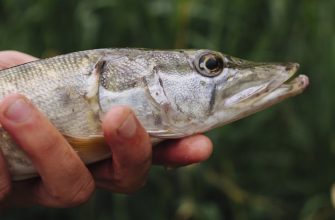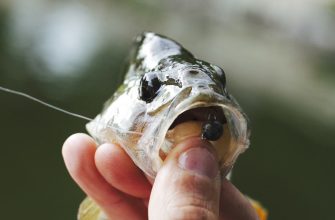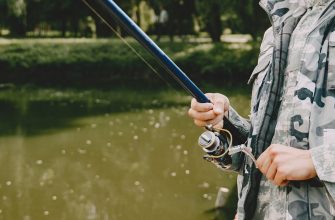- Understanding Finesse Fishing
- What is Finesse Fishing?
- When to Finesse Fish?
- Where to Finesse Fish?
- Finesse Fishing Rod and Reel
- Choosing the Right Rod and Reel
- Rod Length and Action
- Reel Type and Gear Ratio
- Recommended Specifications and Features
- Rod Specifications
- Reel Specifications
- Fishing Line Selection
- 1. Fluorocarbon Line
- 2. Monofilament Line
- 3. Braided Line with a Fluorocarbon Leader
- Rigging for Finesse Fishing
- Soft Plastic Worms
- Drop Shotting
- Jigs
- Finesse Techniques
- 1. Wacky Rig
- Description of the Technique
- Step-by-step guide to Setting Up Wacky Rig
- Tips for Effectively Fishing
- 2. Drop Shot Rig
- Description of the Drop Shot Rig Technique
- Step-by-Step Guide to Setting Up Drop Shot Rig
- Tips for Effectively Fishing
- 3. Ned Rig
- Description of the Ned Rig Technique
- Step-by-Step Guide to Setting Up Ned Rig
- Tips for Effectively Fishing
- 4. Other Finesse Setups
- Skipping Tubes
- Shaky Heads
- Split-Shotting
- Mojo Rig
- Texas Rig
- Best Practices and Tips
- Presentation Techniques
- Techniques for presenting finesse lures effectively
- Tips for enticing strikes from bass
- Reading the Water
- Understanding water conditions and their impact on finesse fishing
- Tips for reading underwater structures and locating finesse fish
- FAQs
- Q: What is finesse fishing?
- Q: How does finesse fishing differ from other styles of fishing?
- Q: What are some common finesse fishing techniques?
- Q: What type of equipment is typically used for finesse fishing?
- Q: What are the key considerations when finesse fishing in a lake?
- Q: How does finesse fishing help in catching largemouth bass?
- Q: What is the role of the split-shot in finesse fishing?
- Q: Can finesse fishing be effective during the spawn?
- Q: What are the advantages of using finesse tactics in bass fishing?
- Q: How important is the choice of line when finesse fishing?
Welcome to the comprehensive guide on mastering finesse techniques for bass fishing! In this article, we will explore the importance of finesse angling and how it can greatly enhance your fishing skills.
It is a method of fishing that is highly effective in targeting bass. It involves using lightweight tackle and subtle presentations to entice even the most finicky bass. Unlike other methods that rely on power and aggression, finesse angling relies on finesse and precision.

One popular finesse method is using a Senko worm rigged on a light 10-pound test line. The Senko is a versatile bait that can be set up in various ways, such as the Texas rig or Ned rig. When finesse angling, it’s important to use a light line to maintain sensitivity and ensure a natural presentation.
To effectively finesse fish, you’ll want to target specific areas where bass are likely to be found. Look for structures, such as boat docks or submerged logs, and areas with a depth of around 18 inches to a few feet of water. Bass tend to congregate in these areas, making them prime targets for trolling.
When finesse angling, it’s crucial to have the right equipment. A medium-action spinning rod and reel combo are ideal for finesse methods. This setup allows for precise casts and provides the right amount of sensitivity to detect subtle stings. Pair your rod and reel with a high-quality finesse hook, such as Gamakatsu, to ensure a secure hookup.
One key aspect of finesse angling is maintaining a slack line. As you present your bait, let it drop naturally and keep a slight slack in your line. This allows the bait to move freely and appear more natural, increasing your chances of enticing a bite.
As you finesse fish, be observant of any subtle movements or jerks in your line. Bass often inhale the bait without a noticeable tug, so it’s important to react quickly to any changes in line movement. A finesse angler needs to be patient and have a keen eye for detecting these subtle actions.
With finesse angling, it’s all about finesse and precision. By using lighter tackle, subtle presentations, and paying attention to detail, you can master the art of finesse angling and greatly increase your success on the water.
Remember, finesse angling is a method that requires practice and patience. It may take some time to perfect your finesse angling skills, but the rewards are well worth it. So grab your gear, load up your tackle box with finesse baits, and get ready for an exciting and rewarding finesse-angling adventure!
Understanding Finesse Fishing

What is Finesse Fishing?
Finesse angling is a technique used by anglers to catch bass in situations where traditional methods may not be as effective. It involves using light tackle and subtle presentations to entice fastidious bass into nibble. By downsizing lures and using more finesse in the presentation, anglers can target bass that are less aggressive or in heavily pressured waters.
Finesse angling methods often involve using smaller soft synthetic baits, such as worms or creature baits, set on lightweight hooks. The goal is to mimic natural prey and present a more subtle offering to the bass. This approach requires finesse and precision in the angler’s presentation, as well as patience and attentiveness to detect subtle stings.
When to Finesse Fish?
Finesse angling can be effective in various situations, especially when bass are less active or in challenging fishing conditions. Here are some scenarios when finesse angling can be particularly useful:
- Post-Cold Front: After a cold front passes through, bass can become lethargic and less willing to chase fast-moving lures. Finesse methods allow you to take your time and present a more tempting meal to these fastidious basses.
- Clear Water: In clean water, bass can have a high level of visibility and become more cautious. Finesse angling with smaller, more natural-looking baits can increase your chances of getting a sting.
- High Fishing Pressure: In heavily fished waters, bass can become wary and less responsive to traditional methods. Finesse spinning fishing offers a more subtle approach that can entice those pressured bass to nibble.
Where to Finesse Fish?
To effectively finesse fish, it’s important to target the right areas where bass are likely to be found. Here are some key locations to focus on:
- Structure and Cover: Bass love to hide in structure and cover such as rocks, logs, and vegetation. Finesse angling allows you to precisely target these areas and present your bait in a way that entices bass to strike.
- Drop-offs and Transition Zones: Bass often position themselves along drop-offs and transition zones where they can ambush prey. Finesse methods can be effective in these areas, as they allow you to keep your bait in the strike zone for a longer time.
- Shallow Water: Finesse angling is not limited to deep water. It can be highly effective in shallow water, especially when bass are in a more sluggish mood. Target areas like shoreline cover, docks, and submerged vegetation using finesse presentations.
Finesse Fishing Rod and Reel

Choosing the Right Rod and Reel
When it comes to finesse angling, selecting the right rod and reel is crucial for achieving success. With finesse methods relying on subtle presentations and delicate movements, having the appropriate gear can greatly enhance your chances of landing fastidious bass. Here are some key factors to consider when choosing your angling rod and reel:
Rod Length and Action
For finesse angling, a medium to medium-light rod with a length between 6 to 7 feet is recommended. This length provides the necessary sensitivity to detect subtle nibbles while still offering enough control and leverage to handle larger fish. When it comes to rod action, a fast or extra-fast action is preferred as it allows for quick and precise hook sets.
Read more: Primitive Fishing Techniques for Catching Fish in a Survival Situation
Reel Type and Gear Ratio
When selecting a reel for finesse angling, spinning reels are the popular choice among anglers. Spinning reels offer excellent line management and allow for accurate throws with light baits. Look for a reel with a smooth drag system and a gear ratio between 5:1 to 6:1. This gear ratio provides a good balance between pulling the line quickly and maintaining control over finesse presentations.
Recommended Specifications and Features
To optimize your fishing setup, here are some recommended specifications and features to look for in your rod and reel:
Rod Specifications
- Length: 6 to 7 feet
- Action: Medium to medium-light
- Material: Graphite or composite construction for increased sensitivity
Reel Specifications
- Type: Spinning reel
- Gear Ratio: 5:1 to 6:1
- Ball Bearings: Multiple ball bearings for smooth operation
- Drag System: Smooth and reliable drag system for battling fastidious bass
Fishing Line Selection
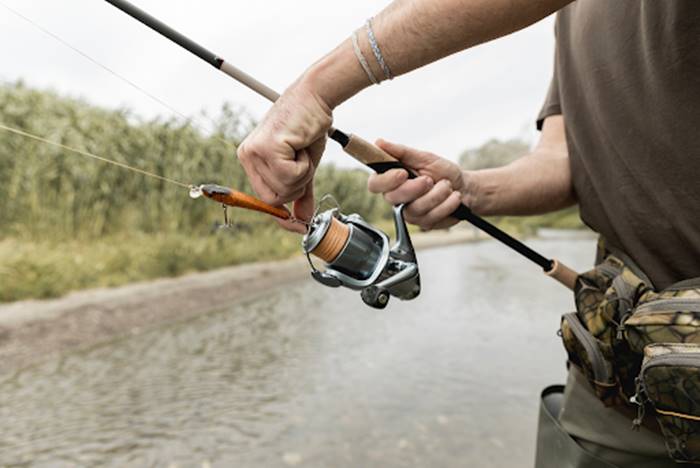
Choosing the right line is crucial for finesse angling. Lighter lines in the range of 6 to 10-pound tests are commonly used to achieve maximum sensitivity and stealth. Fluorocarbon lines are a popular choice due to their low visibility in the water, while some anglers prefer using braided lines with a fluorocarbon leader for added strength and control.
Here are some of the best line options to consider:
1. Fluorocarbon Line
The Fluorocarbon line is a popular choice among finesse anglers due to its excellent sensitivity and low visibility underwater. It is virtually invisible to fish, making it ideal for clean water conditions. Additionally, fluorocarbon line has a high abrasion resistance, which is useful when fishing around structures or covers.
2. Monofilament Line
The Monofilament line is another excellent choice for finesse angling. It offers good knot strength and is more forgiving compared to fluorocarbon, making it easier to handle for anglers of all skill levels. Monofilament also has a slight amount of stretch, which can help prevent the fish from pulling off the hook during the fight.
3. Braided Line with a Fluorocarbon Leader
Some finesse anglers prefer using a braided line as the mainline, paired with a fluorocarbon leader. This combination allows for the benefits of both lines. The braided line provides excellent strength and sensitivity, while the fluorocarbon leader provides stealth and invisibility.
Rigging for Finesse Fishing
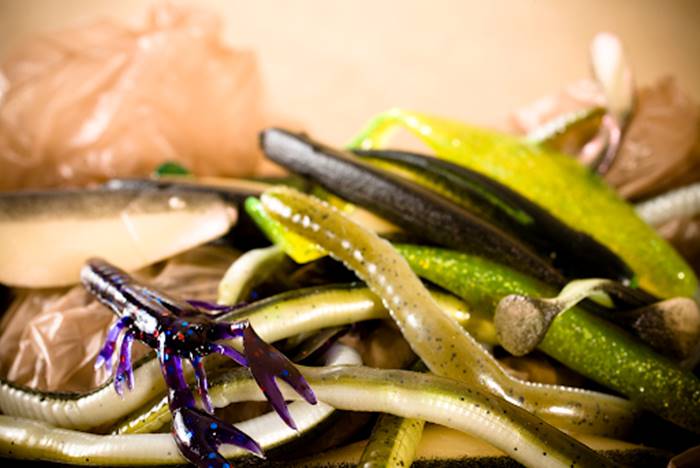
Soft Plastic Worms
When it comes to finesse angling, soft synthetic worms are a go-to bait for many anglers. These versatile lures can be equipped in various ways to entice even the most fastidious bass. One popular setup method is the Texas rig, where the worm is threaded onto a hook and the hook point is buried into the body of the worm to make it weedless. This allows the bait to be effectively fished around cover such as docks and vegetation, where bass often seek refuge.
Another effective setup option is the Carolina rig. It consists of a sliding sinker, bead, swivel, and a leader with the worm attached. The Carolina rig allows the worm to be presented more naturally and subtly, especially in clean water or when bass are feeding in deeper areas. By adjusting the leader length, anglers can control the depth at which the worm is presented, making it a versatile setup for various fishing conditions.
Drop Shotting
Drop shooting is a finesse-angling method that has gained popularity in recent years. It involves setting up a soft synthetic bait above a weight, with the hook tied directly to the line above the weight. The weight is positioned at the bottom, while the bait is suspended above it, creating an enticing presentation that bass find hard to resist.
This method is particularly effective when fishing in clean water or when bass are experiencing high fishing pressure. The drop shot rig allows the bait to be presented at a precise depth, making it ideal for targeting bass holding in specific areas, such as around structure or along drop-offs. By using lightweight lines and subtle movements, anglers can entice bass into nibble.
Jigs
Jigs are another versatile finesse angling option that can be highly effective in a variety of situations. They consist of a weighted head, usually made of lead and a skirted hook. Jigs can be dressed with various trailers, such as soft synthetic crawfish or creature baits, to mimic natural prey and entice bass to strike.
When setting up a jig, it is important to choose the appropriate weight and color based on the fishing conditions. Lighter jigs are suitable for shallow water or when a slower fall rate is desired, while heavier jigs are better for deeper water or when a faster fall rate is needed. By experimenting with different retrieve speeds and jig trailers, anglers can find the combination that triggers the most nibbles.
Finesse Techniques
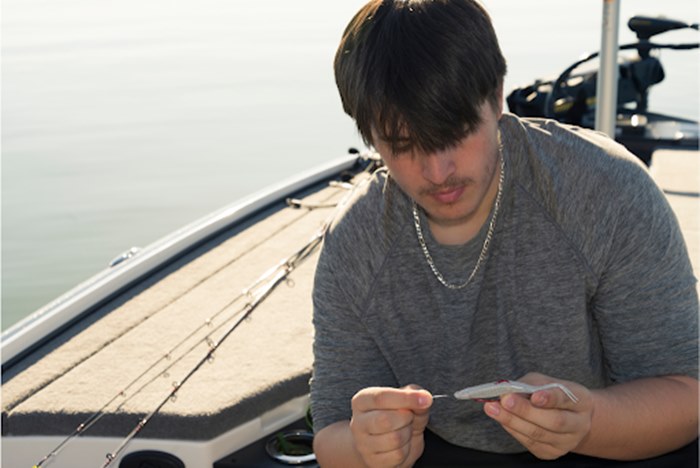
1. Wacky Rig
Description of the Technique
This setup involves using a soft synthetic worm bait set up uniquely. Unlike traditional fishing setups, the wacky setup features a hook inserted through the middle section of the worm, leaving both ends free to move. This creates a tantalizing action as the worm falls and moves in the water, attracting the attention of nearby bass.
Step-by-step guide to Setting Up Wacky Rig
Follow these simple steps:
- Select a soft plastic worm bait of your choice. Popular options include stick worms and finesse worms.
- Take the worm and hold it horizontally in the middle.
- Insert the hook perpendicularly into the worm’s body, slightly off-center. The hook’s point should be exposed.
- Push the hook through until it is centered in the worm, leaving equal lengths of the worm on both sides.
- Ensure the hook is secure but not too tight, allowing the worm to move freely.
Tips for Effectively Fishing
Here are some tips to enhance your success:
- Location: Look for areas with submerged vegetation, rocky structures, or drop-offs where bass are likely to be hiding.
- Retrieve: Use slow and steady pulling, allowing the worm to drop and move naturally. Experiment with pauses and jerks to trigger strikes.
- Presentation: Throw near structures such as docks, submerged trees, or brush piles. Let the worm drop to the desired depth before starting your pulling.
- Line Selection: Opt for lightweight line options, such as fluorocarbon or monofilament, to provide a more natural presentation.
- Hook Set: When you feel a nibble, resist the urge to set the hook immediately. Give the bass a moment to fully take the worm before setting the hook with a gentle upward motion.
2. Drop Shot Rig
Description of the Drop Shot Rig Technique
The drop shot setup is a finesse method that is particularly effective in clear water and when bass are finicky. It allows you to present the bait in a natural, upright position, mimicking an easy meal for the bass. The weight at the bottom keeps the bait in the strike zone, while the suspended presentation entices even the most cautious bass to bite.
Step-by-Step Guide to Setting Up Drop Shot Rig
- Start by attaching a drop shot hook to your main line using a Palomar knot.
- Leave a tag end of about 12-18 inches and attach a drop shot weight to it. The weight should be heavy enough to keep the bait near the bottom but light enough to allow for a natural-looking presentation.
- Tie your favorite soft plastic bait to the drop shot hook. Popular choices include finesse worms, minnow imitations, and creature baits.
- Adjust the length between the bait and weight based on the depth you’re fishing. For shallower areas, a shorter distance works best, while deeper water may require a longer leader.
- Throw your rig near structures such as docks, rock piles, or submerged vegetation where bass are likely to be feeding.
- Allow the weight to drop to the bottom, keeping the bait suspended just above it.
- Use a slow, subtle pulling, gently jerking the rod tip to impart subtle movements to the bait. This mimics the natural behavior of prey and can trigger a feeding response from bass.
Tips for Effectively Fishing
- Experiment with different soft plastic baits to find what bass are hooked on. Finesse worms, shad imitations, and small creature baits can all be effective choices.
- Vary your pulling speed and cadence to find what triggers the most nibbles. Sometimes a slower, almost motionless presentation works best, while other times a more aggressive jerking action can entice a strike.
- Pay attention to your line for any subtle movements or jerks that may indicate a bite. Bass can sometimes take the bait very gently, so being attentive is key.
- When fishing in clean water, consider using lightweight lines and fluorocarbon leaders to make your presentation appear more natural.
- Be patient and persistent. Finesse angling with a drop shot setup can be highly effective but may require some time and experimentation to find the right combination of bait, pulling, and presentation.
3. Ned Rig
Description of the Ned Rig Technique
The Ned Rig method is all about simplicity and finesse. It imitates a small baitfish or a crawfish, which are natural prey for bass. The key to this method is to use light tackle and make subtle movements to entice fastidious bass.
Step-by-Step Guide to Setting Up Ned Rig
- Select a small plastic bait: Choose a soft synthetic bait that resembles a small worm or crawfish. Opt for natural colors such as green pumpkin or brown.
- Choose the right jig head: Use a small, mushroom-shaped jighead with a light wire hook. The weight of the jighead should be appropriate for the depth and current conditions.
- Thread the bait onto the jig head: Insert the hook point into the head of the bait and thread it through the body until the hook is exposed. Make sure the bait sits straight on the jighead.
- Throw and let it sink: Throw your rig near potential bass-holding areas such as structures, weed beds, or drop-offs. Allow the rig to drop to the desired depth before starting the pull-up.
- Employ a slow, subtle pull-up: Use a slow and steady pull-up, making small hops or jerks with your rod tip. The goal is to imitate the natural movements of a prey item.
Tips for Effectively Fishing
- Pay attention to the details: The Ned Rig is all about finesse, so be mindful of small details like the weight of the jig head, the size and color of the synthetic bait, and the pulling speed.
- Experiment with different pullings: Bass can have varying preferences on different days, so try different pull-up techniques like dragging, hopping, or deadsticking to find what works best.
- Focus on areas with fishing pressure: The finesse presentation of the Ned Rig can be highly effective in heavily pressured waters where bass may be wary of larger, more aggressive baits.
4. Other Finesse Setups
Skipping Tubes
Skipping tubes is a finesse method that involves casting a tube lure under docks or overhanging structures. The goal is to make the lure skip across the water’s surface, imitating a fleeing baitfish. This method can be especially effective in enticing bass hiding in tight spaces. When using this setup, it’s important to use a lightweight jighead and a spinning reel to achieve the desired skipping action.
Shaky Heads
The shaky head rig is a finesse method that involves using a jighead with a worm or soft synthetic bait. The jighead is designed to stand upright on the bottom, creating a subtle shaking motion that entices bass to bite. This setup is particularly effective when fishing in areas with rocky or uneven bottoms. When using a shaky head, it’s important to use a light line and make slow, subtle movements to maximize its effectiveness.
Read more: Get Started with the Best Ice Fishing Tips and Techniques for Beginners
Split-Shotting
Split-shotting is a finesse method that involves attaching a small weight, typically a split shot, a few inches above the hook. This weight helps to keep the bait near the bottom while providing a subtle action. Split-shotting is particularly effective when fishing in clear water or when targeting bass. When using this setup, it’s important to make gentle throws and allow the bait to drop slowly before imparting any movement.
Mojo Rig
The mojo rig is a finesse method that involves using a weight attached to a swivel, which is then connected to a leader and a soft synthetic bait. This setup allows the bait to move freely, creating a natural and enticing presentation. The mojo rig is especially effective when fishing in deeper water or when bass are less active. When using this setup, it’s important to make slow pull-ups and allow the bait to drop to the desired depth.
Texas Rig
The Texas rig is a finesse method that involves inserting the hook into a soft synthetic bait and then burying the hook point back into the bait, creating a weedless presentation. This setup is versatile and can be used with a variety of soft synthetic baits, such as worms or creature baits. The Texas rig is effective in various fishing situations, including fishing around cover or in heavy vegetation. When using this setup, it’s important to make accurate throws and vary the retrieve to entice bass.
Best Practices and Tips
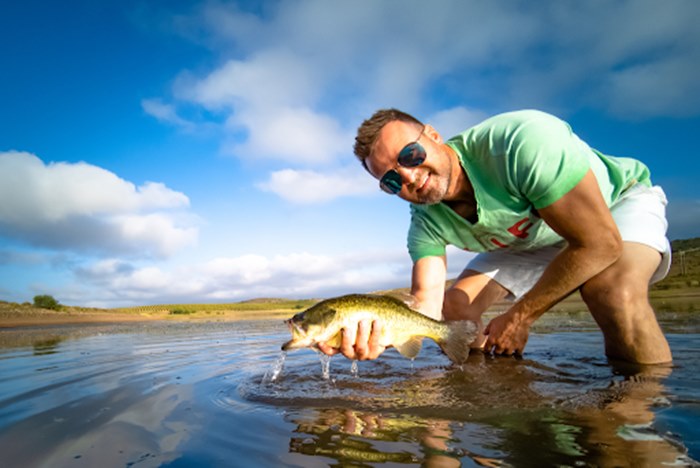
Presentation Techniques
Techniques for presenting finesse lures effectively
When it comes to finesse angling, the presentation of your lures plays a crucial role in enticing strikes from bass. Here are some techniques to help you present finesse lures effectively:
- Light Line: Use lighter lines, such as 6 to 8-pound test, to achieve a more natural presentation. Lightweight lines allow finesse lures to move freely in the water, mimicking the movements of prey.
- Subtle Movements: Finesse lures excel in imitating subtle movements. Utilize a slow pull-up, impart gentle jerks, and let the lure fall naturally to entice fastidious bass.
- Downsized Baits: Opt for smaller finesse baits, like small soft plastics or finesse jigs, to imitate natural prey. The smaller profile and finesse presentation can trigger bites from cautious bass.
Tips for enticing strikes from bass
Fastidious bass can be challenging to catch, but with finesse-angling methods, you can increase your chances of enticing strikes. Consider the following tips:
- Downsize Your Presentation: When targeting fastidious bass, downsizing your lures can make a significant difference. Use smaller finesse baits, such as tiny worms or grubs, to match the size of forage in the water.
- Experiment with Colors: Fastidious bass may have specific color preferences on any given day. Test different colors, such as natural tones or subtle variations, to find what triggers their feeding response.
- Be Patient: Patience is key when finesse angling for fastidious bass. Take your time, give the bass time to inspect the lure, and be ready for a subtle bite. A slow and steady approach can often yield better results.
Reading the Water
Understanding water conditions and their impact on finesse fishing
To become a finesse angling expert, it’s essential to understand how water conditions affect your approach. Here are some key points to consider:
- Water Clarity: In clear water, finesse angling becomes even more critical as bass can detect any unnatural movements or presentations. Use finesse techniques to mimic natural prey and increase your chances of attracting bites.
- Structures and Cover: Finesse angling excels around underwater structures and cover, such as submerged rocks, vegetation, and docks. These areas provide shelter for bass, making them prime locations to target with finesse presentations.
Tips for reading underwater structures and locating finesse fish
Locating finesse fish requires a keen understanding of underwater structures. Follow these tips to improve your success:
- Observe Depth Changes: Pay attention to sudden changes in water depth, such as drop-offs or ledges. Finesse fish often position themselves near these structures, waiting for prey to come within reach.
- Identify Cover: Look for underwater cover, such as fallen trees, submerged vegetation, or rocky outcrops. Finesse fish seek refuge in these areas and ambush passing prey.
Remember, finesse angling is all about precision and finesse. By mastering these finesse methods and understanding the water conditions, you can enhance your chances of landing more bass.
Happy fishing!
FAQs
Q: What is finesse fishing?
A: Finesse angling is a style of fishing that involves using lighter tackle and a more subtle approach to catch fish, especially bass. It often involves techniques such as using a spinning rod, a lighter line, and delicate presentations to entice bites from wary fish.
Q: How does finesse fishing differ from other styles of fishing?
A: Finesse angling differs from other styles of fishing in that it focuses on a more subtle and delicate presentation, often using lighter tackle and more finesse tactics to get the bass to bite, especially in clear or heavily pressured waters.
Q: What are some common finesse fishing techniques?
A: Common finesse angling methods include using techniques such as the split shot, drop shot, wacky rig, or neko rig, as well as fishing with baits like senkos or finesse worms in a more subtle and finesse-oriented manner.
Q: What type of equipment is typically used for finesse fishing?
A: Finesse angling typically involves using a spinning rod with a sensitive tip, a lightweight line such as a 6- or 8-pound test, and finesse-specific lures or baits, often paired with a wide gap hook and light jig heads.
Q: What are the key considerations when finesse fishing in a lake?
A: When finesse angling in a lake, it’s important to consider the depth of the water, the type of cover or structure present, as well as the behavior of the bass, especially during spawn or post-spawn periods.
Q: How does finesse fishing help in catching largemouth bass?
A: Finesse angling can be effective in catching largemouth bass, as it allows for a more subtle presentation that can be irresistible to wary or heavily pressured bass, especially in clear or calm water conditions.
Q: What is the role of the split-shot in finesse fishing?
A: The split shot is a common weight used in finesse angling to lightly anchor the bait while allowing it to move naturally, providing a subtle and natural presentation to entice bass to bite.
Q: Can finesse fishing be effective during the spawn?
A: Yes, finesse angling can be effective during the spawn, as it allows for more delicate and finesse-oriented presentations that can entice bass, especially when they may be less aggressive or wary during this period.
Q: What are the advantages of using finesse tactics in bass fishing?
A: The advantages of using finesse tactics in bass angling include the ability to effectively target wary or heavily pressured bass, as well as to present baits more subtly and naturally, increasing the chances of getting a bite in tough fishing conditions.
Q: How important is the choice of line when finesse fishing?
A: The choice of line is crucial in finesse angling, as lighter lines such as 6- or 8-pound tests allow for more natural bait movement and increased sensitivity to feel the slightest bites, essential for finesse tactics to be successful.


